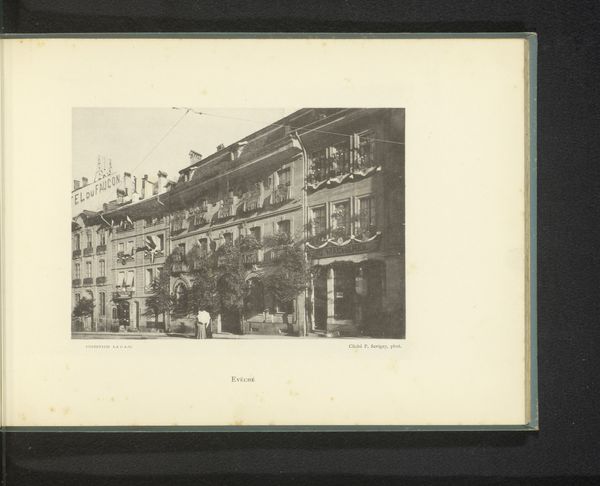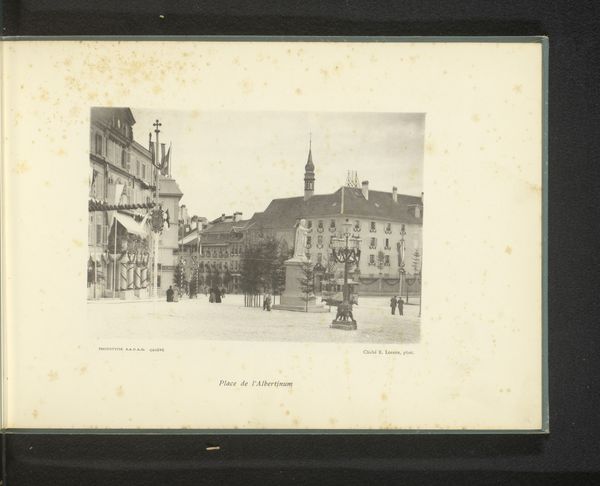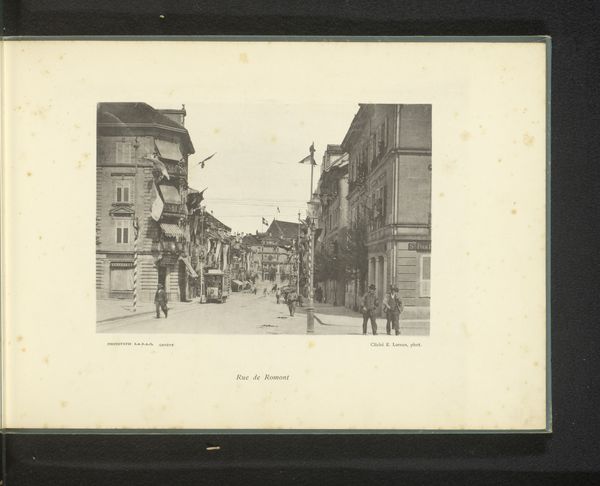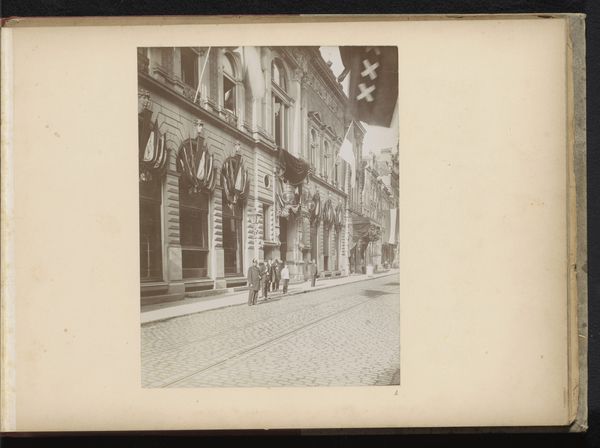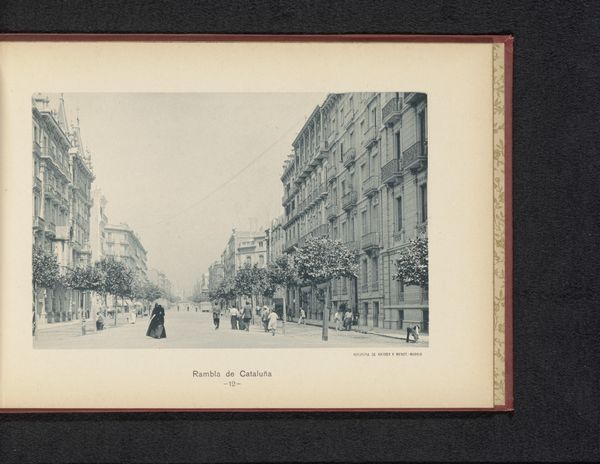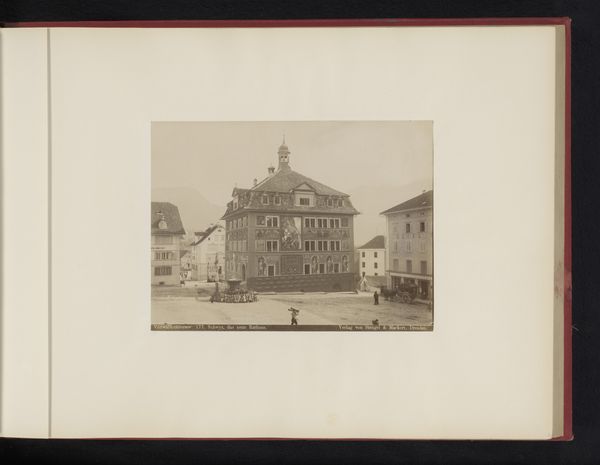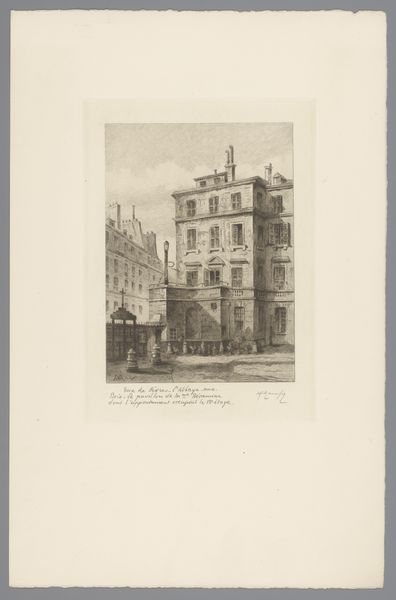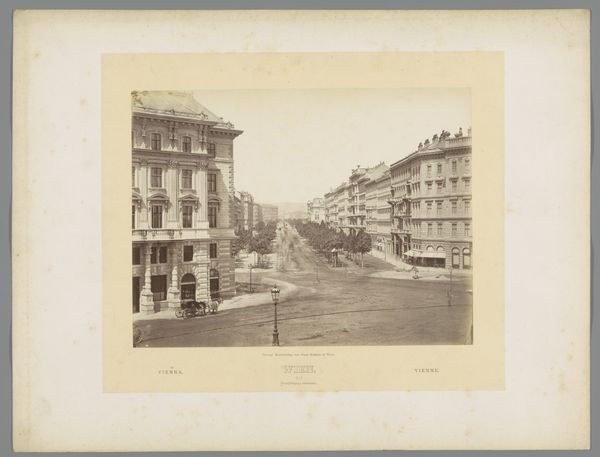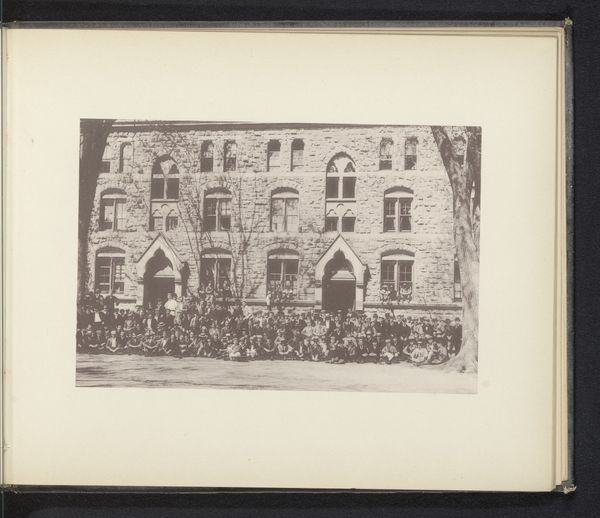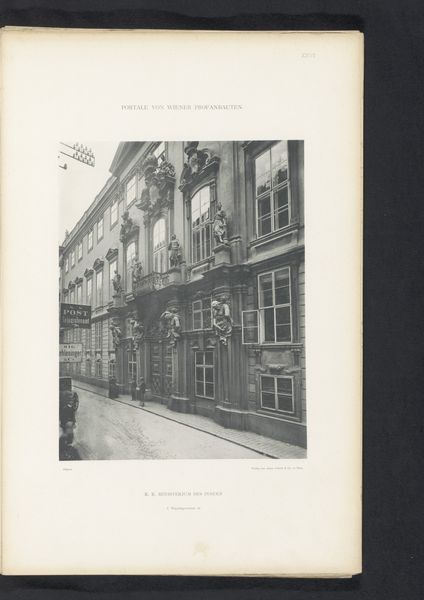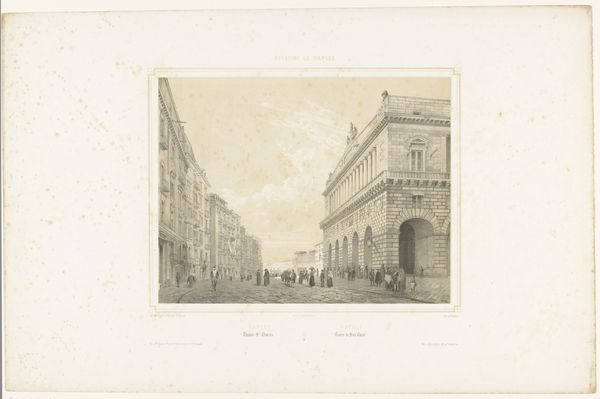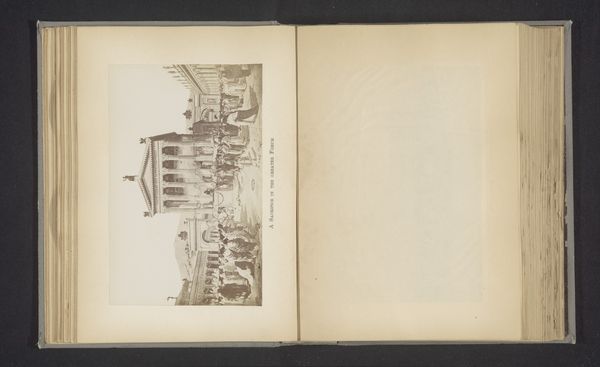
photography, gelatin-silver-print
#
pictorialism
#
photography
#
gelatin-silver-print
#
cityscape
#
street
#
realism
Dimensions: height 112 mm, width 162 mm
Copyright: Rijks Museum: Open Domain
Editor: Here we have Ernest Lorson’s 1897 gelatin silver print, titled *Gezicht op Grand-Rue in Fribourg*, or *View of Grand-Rue in Fribourg*. I'm really struck by the light here, the way it almost glows. It’s beautiful. How do you interpret this work in light of its historical context? Curator: This photograph exemplifies pictorialism's emphasis on artistic effect. Lorson isn't simply documenting Fribourg. He's using photography to create a mood, a feeling. The soft focus, the way light diffuses, mimics painting, which pictorialists believed elevated photography to art. How do you think this aim impacted the subjects chosen at that time? Editor: I guess if they wanted photography to be considered art, it had to depict similar scenes to those of paintings that were considered high art, like landscapes and cityscapes. This street feels intentionally composed, staged even. Was that part of pictorialist photography as a broader practice? Curator: Absolutely. Think of the institutions shaping art then: salons, galleries. Pictorialists sought validation within that framework. They consciously created images acceptable to the established art world, often mimicking its subjects and aesthetics while using then contemporary technical approaches to distinguish from "lower" forms of photography used in documentation or casual portraiture. The political underpinnings here concern a new technology struggling for acceptance. What kind of audience do you think Lorson imagined for his work? Editor: I see, he's creating a controlled and palatable representation of reality. I think he was speaking to elites within society: fellow artists, upper-class citizens, academics maybe? Those who frequent galleries and engage in the public discourse surrounding "high" art. This was truly enlightening, I understand a lot better the intention behind Lorson's decisions. Curator: And it makes us consider what images of cities are seen as important now. Do we frame city streets to impress the elite?
Comments
No comments
Be the first to comment and join the conversation on the ultimate creative platform.
